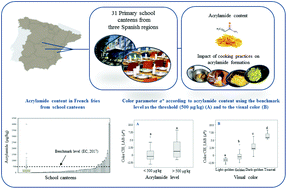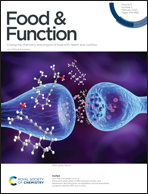Acrylamide in French fries prepared at primary school canteens
Abstract
Children are one of the most exposed groups to dietary acrylamide with ‘potato fried products’ that account for up to half the total exposure to this contaminant. Acrylamide was measured in French fries prepared in 31 primary school canteens randomly recruited from different Spanish regions. The mean content was 329 μg kg−1 (from <20 to 4000 μg kg−1). French fries prepared from frozen par-fried potatoes reported a lower acrylamide content than those from fresh potatoes, 229 and 460 μg kg−1, respectively. Only 15.7% of samples were above the benchmark levels established by the EU Regulation 2017/2158 (500 μg kg−1). Significant differences were found according to the color of toasted (2274 μg kg−1), dark-golden (463 μg kg−1), golden (134 μg kg−1) and light-golden (52 μg kg−1) French fries. All the samples that were golden and light-golden showed acrylamide content below the threshold. The chromatic parameter a* was used as a rough classification of the French fries according to the benchmark level. Both educational initiatives intended for food operators and managerial-technical criteria that include the code of frying practices at public food service establishments should consider the golden color as the target for the end-point of frying. Acrylamide exposure will be reduced and, therefore, the risk linked to French fries consumption. This fact is especially relevant in establishments that prepare food for schoolchildren and would help to provide healthier diets, not only from a nutritional point of view but also from the reduction of chemical contaminants.

- This article is part of the themed collection: Food & Function Recent Open Access Articles


 Please wait while we load your content...
Please wait while we load your content...